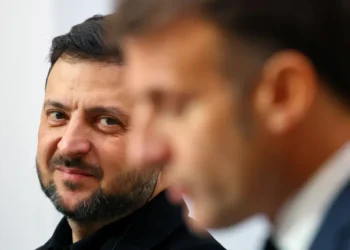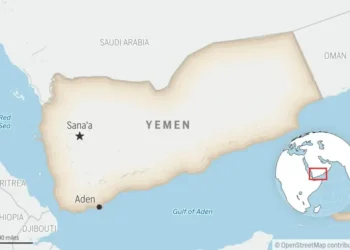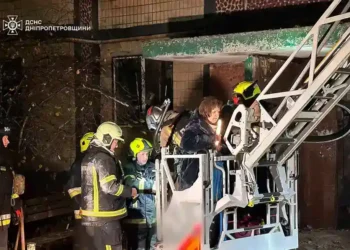Advanced Iranian Tech Found in Russian Drones Hints at New Phase in Ukraine War
KYIV, Ukraine — Ukrainian forces recovering debris from a recent Russian drone strike made a startling discovery: a white, AI-powered drone unlike anything they’d seen before.
The weapon featured an advanced camera system, artificial intelligence for autonomous navigation, and — perhaps most notably — anti-jamming technology believed to be of Iranian origin. According to Serhii Beskrestnov, a Ukrainian drone expert better known as “Flash,” the internal components bore no Russian markings. Instead, the labels matched Iran’s standard format.
While the presence of English-language labels isn’t definitive proof, drone analysts say it strongly suggests the drone — or at least its tech — was supplied by Iran, possibly as part of a real-world test by Russia.
Russia’s Drone Arsenal Is Evolving Fast
For years now, Russia has leaned heavily on Iranian-designed Shahed drones in its campaign against Ukraine. These buzzing, moped-like aircraft have become a near-nightly threat, swarming Ukrainian cities with a mix of explosive warheads and decoys. But what’s different now is how advanced — and effective — some of these drones have become.
The most recent model discovered by Ukrainian drone hunters had features never seen before in the conflict:
- An AI computing platform to maintain navigation if jammed
- A live radio link allowing it to be re-tasked mid-flight
- Eight antennas, making it especially resilient to electronic interference
- A camera system, suggesting it may have been targeting infrastructure like electrical grids
Experts believe this level of sophistication — previously rare — could signal that Iran is exporting cutting-edge technology to Russia, even as much of the production has already shifted inside Russian borders.
From Purchase to Production: The Alabuga Plant
Russia isn’t just buying drones from Iran — it’s building them. The heart of this operation is the Alabuga drone factory in Tatarstan, a secretive facility that sprang into action following a $1.7 billion deal with Iran in 2022.
Initially, Iran shipped around 600 disassembled drones, which Russia reassembled before setting up its own production lines. Since then, Russia has steadily upgraded the Shahed design, incorporating:
- Thermobaric warheads, which cause internal injuries by sucking oxygen from enclosed spaces
- Decoy drones as part of “Operation False Target” to confuse Ukrainian air defenses
- Jet-powered Shaheds, though expensive and not widely used
This evolution marks a shift from reliance on foreign imports to domestic innovation, albeit still based heavily on Iranian designs, technology, and expertise.
Israel’s Strikes on Iran: A Wild Card
Despite the tightening military ties between Moscow and Tehran, there may be new obstacles on the horizon.
Recent Israeli strikes on Iranian military and drone manufacturing sites — though shrouded in secrecy — could disrupt Tehran’s ability to supply high-tech components to Russia. If key facilities producing engines, anti-jamming units, or navigation software are hit, Russia’s production lines could eventually feel the pinch, experts say.
Still, much of the tech has already been transferred to Russia, limiting the short-term impact.
Changing Tactics — and Growing Effectiveness
Beyond the hardware, Russia is clearly shifting its drone strategy:
- Altitude shifts: Flying higher to avoid gunfire, and lower to dodge radar
- Swarm tactics: Launching waves of decoys to exhaust defenses before striking with real warheads
- Remote piloting: Using radio links to retarget drones mid-flight
- Group assaults: Hitting entire cities with dive-bomb-style attacks
The result? A dramatic increase in drone strike success rates.
According to data collected by the AP and the Ukrainian Air Force, only 6% of Russian drones hit a target in November 2024. By June 2025, that figure had jumped to 16%, with some nights seeing nearly 50% of drones reaching their mark.
Ukrainian officials credit this jump to both technological advancements — like the anti-jamming and AI tech — and tactical changes, including the use of decoys and more frequent attacks.
The Bigger Picture
While Ukraine races to adapt, analysts warn that Russia’s recent gains may not last forever.
“If Israel keeps striking Iran, that will eventually squeeze Russia’s drone supply,” said David Albright of the Institute for Science and International Security. “They’re not going to be able to get as much assistance from Iran as they have been.”
Still, as long as Iran and Russia keep finding workarounds to sanctions — and as long as technology from the West, China, and elsewhere keeps flowing in — Ukraine’s skies will remain under threat.
This article was rewritten by JournosNews.com based on verified reporting from trusted sources. The content has been independently reviewed, fact-checked, and edited for accuracy, neutrality, tone, and global readability in accordance with Google News and AdSense standards.
All opinions, quotes, or statements from contributors, experts, or sourced organizations do not necessarily reflect the views of JournosNews.com. JournosNews.com maintains full editorial independence from any external funders, sponsors, or organizations.
Stay informed with JournosNews.com — your trusted source for verified global reporting and in-depth analysis. Follow us on Google News, BlueSky, and X for real-time updates.













